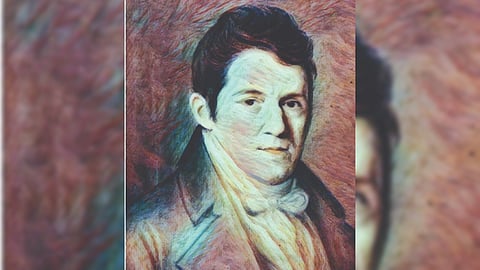

CHENNAI: The town, which was the original Madras, was called by the colour of its predominant inhabitants- Black Town. In 1905, the British decided to rename it after their crown prince and it became George Town.
But people overwhelmingly decided to call it after a businessman. It’s called Parry’s Corner today but many don’t even know it had other names like Muthialpet, Black Town or Gentoo Town.
Thomas Parry from Wales was too poor to even pay for his ship passage and worked as a deckhand. After his vessel carrying troops crossed the equator twice on a travel of 105 days, he jumped ship when it anchored here; for, his name was noted on its register as a deserter. He was sure he could make a fortune here, as he had good contacts. Colonel Patrick Ross, a cousin who designed the fort, was Chief Engineer at Fort St George. Within a decade, Parry was counted as one of the richest men in Madras.
The British had knocked off the old Black Town when they found it impossible to defend the fort, as it was surrounded by cluttered alleys and huts. The resolute British fashioned an uncluttered space around the fort called the Esplanade. They even set up a series of obelisks and warned residents not to build beyond that.
Parry chose a plot next to the easternmost obelisk, but after a few owners. His builder remodelled an existing corner house in Palladian architecture with lower floors having godowns and sea-facing offices on the higher levels.
There was hardly a beach worth its name in Madras, and the sea, when rough, would approach his doorway. But the building was destined to become the most recognisable corner in town. When Governor Clive evicted all businesses from the fort, trading ships started anchoring just opposite the Black Town. The ships saw Parry’s building first on arriving in Madras, which added to his reputation.
But 21-year-old Parry had a tough time before he settled down in Madras. Trying his hand in several businesses, starting from selling lottery tickets to newspapers and peddling insurance. The variety of businesses Parry did shows one of the numerous opportunities that were available to a man with a will in colonial Madras.
Though the East India Company licenced free merchants, it made sure they never became its competitors. Thomas found himself in the displeasure of the Company more than once and it even forced him into exile to Ceylon for ruffling its ego once.
In Santhome, Parry started perhaps the first modern factory in India. It was a tannery and a boot-making unit. He even managed to export many to the US. Parry built a sea-facing castle in Santhome and lived a playboy’s life. But immersing himself in worldly pleasures, he had to shut shop and become an employee of the Nawab of Arcot.
When Parry announced that he was leaving for good, many well-wishers and competitors gave him a gold cup engraved with their words of thanks. On receiving the cup, Parry announced he would not leave Madras. But soon he died of cholera near Cuddalore in 1824. He was buried in a churchyard in Porto Novo. After changing many hands, the cup is now in the British Museum.
Parry’s last will and testament was a remarkable document. Being a seasoned businessman reflected in his will as well. Being most generous to ladies other than his wife, the will particularly provided for Armenian Mary Ann Carr during her natural life the sum of fifty rupees and for the support of any child which Mary Ann Carr may have within nine months from the date of his death.
The company Thomas Parry founded is still alive and thriving here though he will not recognise most of the activities it does today. But by a quirk of fate, his headquarters is named after another man. After a series of owners took the Parry Company from strength to strength, the management decided to pull down the original Parry building. They designed an Art deco building in its place.
When they decided to name it after Parry, their main tenant the United States consulate objected. Their reason was that their staying in a building with a commercial establishment’s name was tantamount to advertising it on their letterheads. Not wanting to lose the tenant, the company was named after one of its partners of Thomas: the Parry headquarters is called Dare House today.
Visit news.dtnext.in to explore our interactive epaper!
Download the DT Next app for more exciting features!
Click here for iOS
Click here for Android